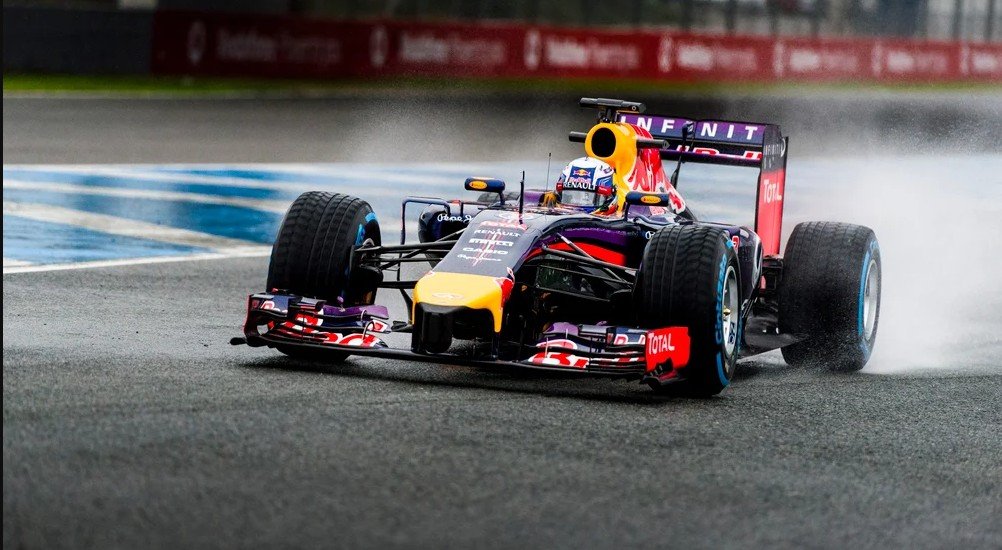Formula 1 is the pinnacle of motorsport, known for its high-speed thrills, cutting-edge technology, and exceptional driver skill. One of the most frequently asked questions about F1 is: “How fast do Formula 1 cars go?” The answer is not straightforward, as F1 car speeds depend on various factors, including track layout, aerodynamic setup, and engine performance. In this article, we will explore the top speeds of Formula 1 cars, their acceleration, and the elements that contribute to their incredible velocity.
Top Speeds of Formula 1 Cars
F1 cars are engineered to achieve extraordinary speeds. On average, modern Formula 1 cars can reach speeds of approximately 220 to 230 mph (354 to 370 km/h) in optimal conditions. However, these speeds vary depending on the circuit, weather conditions, and car setup.
Record for the Fastest F1 Car
The highest speed ever recorded in an official F1 event was 372.6 km/h (231.4 mph), achieved by Valtteri Bottas in a Mercedes W11 during the 2016 Mexican Grand Prix. However, outside of an official race, the fastest recorded speed is 397.36 km/h (246.9 mph), set by a modified Honda F1 car in 2006 at the Bonneville Salt Flats.
Acceleration: How Quickly Do F1 Cars Reach High Speeds?
Formula 1 cars are not only built for top speed but also for rapid acceleration. Here’s how quickly they can reach different speeds:
- 0 to 60 mph (0-100 km/h): Around 2.6 seconds
- 0 to 124 mph (0-200 km/h): Approximately 5 seconds
- 0 to 186 mph (0-300 km/h): Roughly 10-12 seconds
These acceleration figures make F1 cars some of the fastest-accelerating vehicles in the world, rivaling even high-end hypercars.
Factors Affecting F1 Car Speed
Several key elements influence how fast an F1 car can go:
1. Engine Power
Modern F1 cars are powered by 1.6-liter V6 turbo-hybrid engines, producing around 1,000 horsepower. The hybrid power unit includes an Energy Recovery System (ERS), which captures and reuses energy to boost performance.
2. Aerodynamics
Aerodynamics plays a crucial role in an F1 car’s performance. Teams design their cars to generate optimal downforce, which enhances cornering speed and stability. However, too much downforce increases drag, reducing top speed on straights. Some circuits, like Monza, require a low-drag setup for maximum speed.
3. Weight and Materials
F1 cars are built with lightweight materials like carbon fiber to reduce weight. A modern F1 car weighs around 798 kg (1,759 lbs), including the driver. A lighter car allows for faster acceleration and improved fuel efficiency.
4. Tires and Grip
Pirelli supplies F1 teams with high-performance racing tires that provide exceptional grip. Different compounds affect speed and handling. Soft tires provide better grip and acceleration but wear out faster, while hard tires last longer but offer less grip.
5. Track Design
The layout of an F1 circuit greatly impacts top speeds. High-speed circuits like Monza allow cars to reach speeds of over 220 mph, whereas street circuits like Monaco have lower top speeds due to tight corners and shorter straights.
How Do F1 Cars Compare to Other Vehicles?
F1 cars are among the fastest racing machines in the world, but how do they compare to other high-speed vehicles?
- Formula 1 vs. IndyCar: IndyCars have higher top speeds, reaching around 240 mph (386 km/h) on oval tracks. However, F1 cars are faster on road courses due to superior aerodynamics and braking performance.
- Formula 1 vs. Hypercars: Hypercars like the Bugatti Chiron can reach similar top speeds (~261 mph or 420 km/h), but F1 cars accelerate much faster and handle corners more efficiently.
- Formula 1 vs. MotoGP: MotoGP bikes have impressive acceleration but lower top speeds (225 mph or 362 km/h) compared to F1 cars. However, motorcycles have different handling dynamics due to their lighter weight.
Braking: How Quickly Can F1 Cars Stop?
F1 cars not only reach high speeds rapidly but also decelerate incredibly fast. The advanced braking system, combined with aerodynamic downforce, allows an F1 car to slow down from 200 mph (322 km/h) to a complete stop in about 4-5 seconds, covering roughly 100 meters (328 feet).
Future of F1 Speeds: What’s Next?
With continuous advancements in technology, F1 cars may become even faster in the future. Some areas of improvement include:
- Hybrid Technology Enhancements: More efficient energy recovery systems can provide additional power boosts.
- Aerodynamic Innovations: Adjustments to wings and bodywork could reduce drag while maintaining high downforce levels.
- Lightweight Materials: Using next-generation materials can further reduce weight and improve speed.
- Regulatory Changes: FIA regulations may impact top speeds by limiting power output or modifying aerodynamics.
FAQ
1. What is the top speed of a Formula 1 car?
Modern F1 cars can reach speeds of around 220-230 mph (354-370 km/h) in optimal conditions.
2. What is the fastest speed ever recorded in F1?
The highest speed recorded in an official F1 event is 372.6 km/h (231.4 mph) by Valtteri Bottas in 2016.
3. How fast can an F1 car accelerate?
F1 cars can go from 0 to 60 mph (0-100 km/h) in about 2.6 seconds.
4. How do F1 cars compare to IndyCars?
IndyCars have higher top speeds on ovals but F1 cars are faster on road circuits due to better aerodynamics and braking.
5. Can an F1 car beat a hypercar in a race?
Yes, F1 cars have superior acceleration, cornering speed, and braking, making them faster in a race scenario than most hypercars.
Conclusion
Formula 1 cars are some of the fastest and most advanced vehicles in the world, reaching top speeds of over 230 mph and accelerating from 0 to 60 mph in under 3 seconds. Their speed is influenced by various factors, including engine power, aerodynamics, weight, tires, and track design. While F1 cars may not hold the absolute speed record, their ability to combine speed, agility, and braking efficiency makes them the ultimate racing machines. As technology evolves, we can expect even more thrilling advancements in F1 car performance in the coming years.

